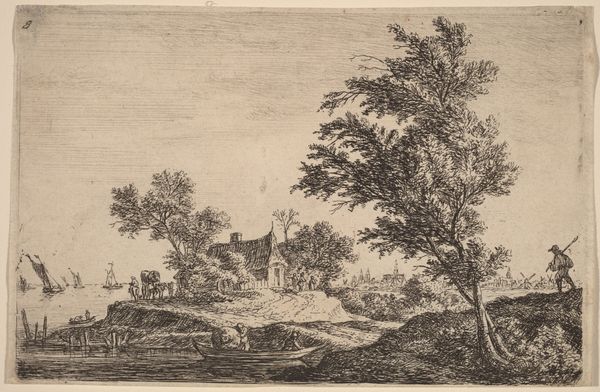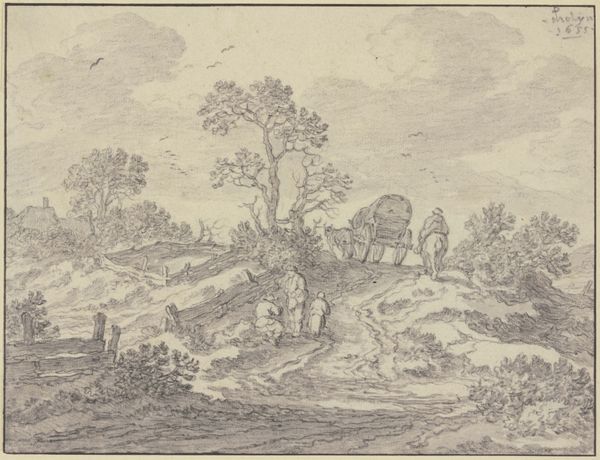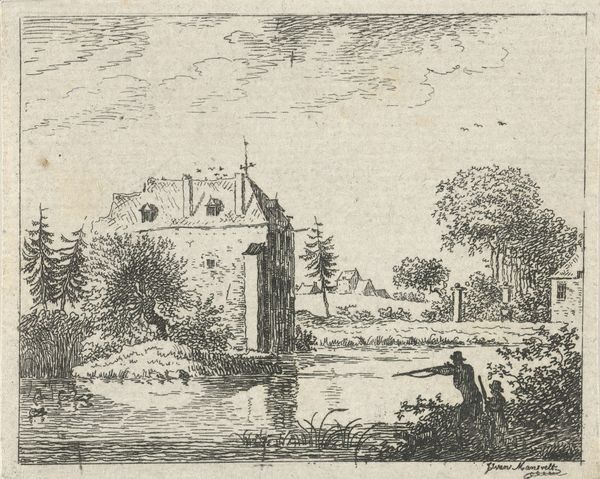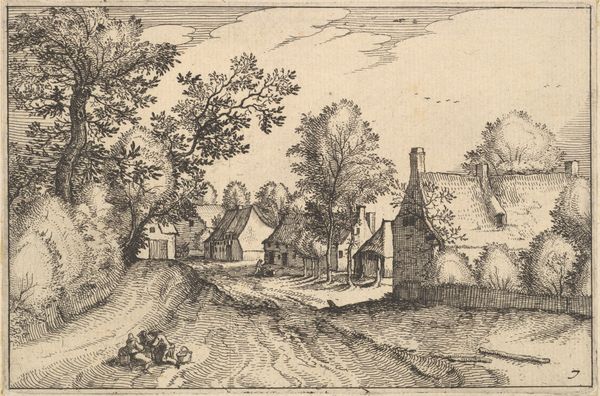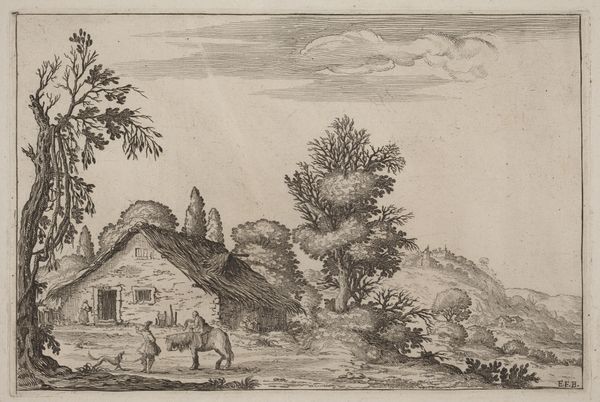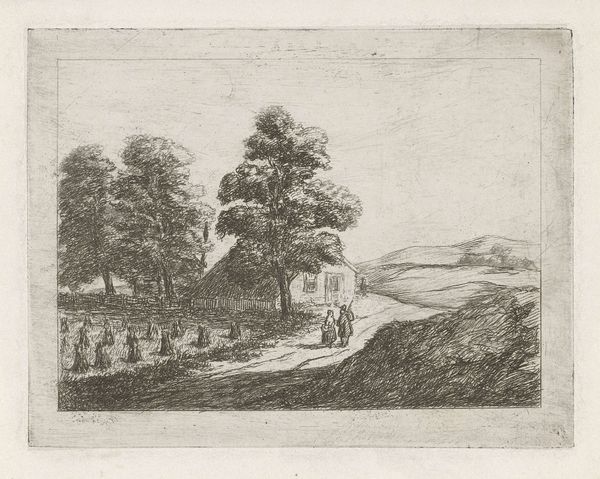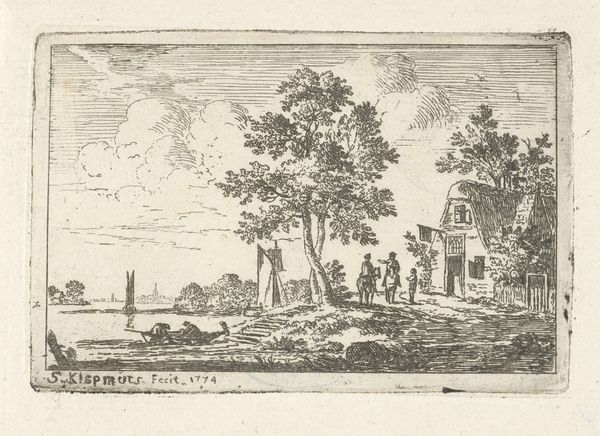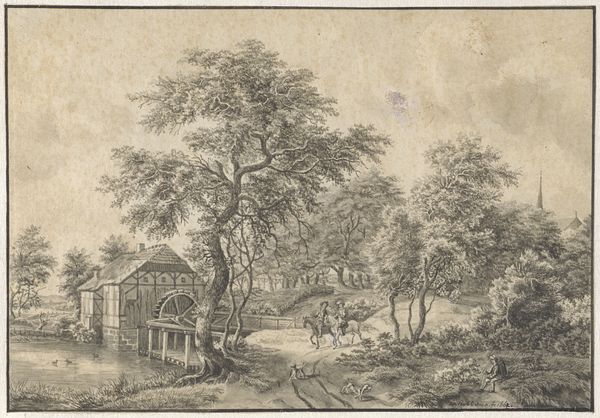
print, etching, engraving
#
baroque
# print
#
etching
#
landscape
#
etching
#
engraving
Dimensions: sheet: 15.4 × 19.5 cm (6 1/16 × 7 11/16 in.) book: 15.88 × 20.32 × 0.95 cm (6 1/4 × 8 × 3/8 in.)
Copyright: National Gallery of Art: CC0 1.0
Editor: So, this is "Landscapes and Heads," an etching by Christian Ludwig von Hagedorn from around 1743 to 1745. It’s so delicate, almost ephemeral, with all the fine lines. I'm immediately drawn to the way the landscape feels both natural and staged. What catches your eye about this piece? Curator: What interests me are the materials used and the labor involved in creating this etching. Consider the copper plate: it’s not just a surface but an industrial product. Each etched line is a deliberate act, a controlled removal of material, reflecting the artisan’s skill and the printmaking workshop's broader socio-economic context. Look at the inscription – how does that framed text function as a material object within the landscape? Editor: That's interesting. I hadn't thought about the copper plate as an "industrial product" itself. And I guess the etching process turns metal into, well, art. How does this tension between "high art" and craft work in the context of 18th-century art? Curator: Exactly! By the 18th century, the print market was booming. The increased production changed art consumption and allowed wider access. But access came at what cost? It's about demystifying artistic genius and pointing to the material conditions that made the "artwork" available in the first place. What happens when landscape and heads become reproducible commodities? Editor: So, it challenges the idea of the unique masterpiece by highlighting the process of making multiple copies? Curator: Precisely! We must also think of distribution and who might own these images. Examining the work as a consumer object, deeply embedded in social structures. This reveals the intricate relationships between production, consumption, and the construction of taste. Editor: Wow, I hadn't considered how much the means of production shapes our understanding. Curator: Looking beyond aesthetic pleasure encourages critical engagement with the social and economic forces behind the art we see. Art doesn’t exist in a vacuum; it reflects, and is shaped by, its material context. Editor: This gives me a completely new perspective to look at other artworks as well, thinking of them as part of broader economic system, and of what "labor" is involved in the creation. Thank you!
Comments
No comments
Be the first to comment and join the conversation on the ultimate creative platform.


